In destinies sad or merry, true men can but try.
– Sir Gawain and the Green Knight
In scientific prognostication we have a condition analogous to a fact of
archery—the farther back you draw your longbow, the farther ahead you can
shoot.
– Buckminster Fuller
Birthdays are generally just that, even “major” birthdays, like my most recent
one, my 70th. They are an occasion for a celebration, perhaps a modest one,
perhaps not quite so modest – our house was crowded with dinner guests for my
father’s 50th birthday – perhaps even extravagant. I’ve never been to an
extravagant birthday party. Birthdays may also be a time for reflection, but
by no means necessarily so.
But in my experience birthdays rarely correspond to major life events. What’s
a major life event? Getting married, whether at a small civil ceremony before
a judge or an elaborate wedding with 100s of guests into the church and out to
the reception where a great band – like me and my colleagues in The Out of
Control Rhythm and Blues Band – performs for hours of dancing, that’s a major
life event. Climbing a mountain you’ve trained for over a period of years,
that’s a different kind of major life event. Graduating from school, or
completing basic training in the military, passing the bar exam, all major.
Years ago, in my early 20s, I was in a rock band called “St. Matthew Passion.”
It was our last gig, the sax player and I were jamming a whacked out intro to
“She’s Not There” and suddenly it all disappeared, me, the musicians, the
room, the world, all into a brilliant, but soft, white light. Only the light
and the music. It lasted what, half a second, a second, two seconds? Whatever.
Those few moments challenged me for years, changing my sense of myself and the
world.
Major life events come in all forms and durations, but they rarely coincide
with a birthday. Birthdays simply mark the passage of time.
That was a bit unusual because I generally write in the morning, and perhaps I
was motivated by my birthday to do something a bit different. But that’s all
it was, a change in routine. It’s no big deal; I do it all the time.
But then I realized, sometime in the afternoon, that this birthday IS a big
deal, and that I really can make it a big deal. How? By finishing my working
paper, Calculating meaning in “Kubla Khan” – a rough cut. Why is that
important, major milestone important? Because I’ve been working on it almost
50 years, all my adult life.
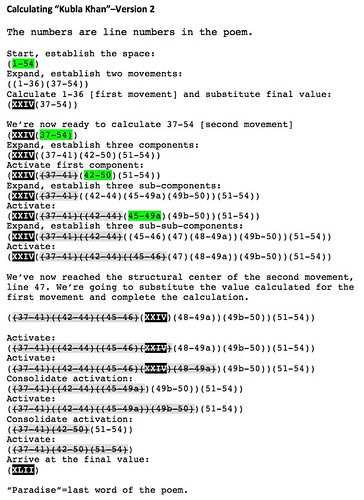
|
|
Teaser: Calculating meaning in “Kubla Khan”, 2017
|
This image likely makes little sense. Don’t worry about it. There are
two more images that won’t make much sense. Don’t worry about them
either. Just look at them as you would displays in a museum or gallery
and move on.
Not that paper, no, not that. It’s the poem, “Kubla Khan”, by Samuel Taylor
Coleridge, that I’ve been tracking all my adult life. I’ve been working on it
since the spring of 1969 when I read it in Earl Wasserman’s class in my senior
year at The Johns Hopkins University in Baltimore – where my father had gone
to school. To have completed a project that framed one’s adult life, that is
indeed a major event. Not completed, not in the sense that it’s all over and
done with – for it isn’t, but in some deep and fundamental sense, things have
changed. I’ve got a new understanding, and new obligations to go with it.
The first five lines:
In Xanadu did Kubla Khan
A stately pleasure-dome decree:
Where Alph, the sacred river, ran
Through caverns measureless to man
Down to a sunless sea.
There are 49 more.
Let me explain. Perhaps then you will understand why I expect the next decade
to be the most productive one of my life. And not just my intellectual life.
There is the Bergen Arches Project as well. And who knows what else? I wonder
if Rita Moreno is available for salsa lessons?
The road to “Kubla Khan”
As William Wordsworth observed at the beginning of the 19th century, the child
is father to the man, so let’s go back to my childhood.
When I was seven or eight I received a toy. The toy came in a box. And the box
fascinated me. On the top of the box was a picture, and in the picture was a
boy. In the boy's hand was a box. And on the cover of that box was a picture.
In that picture was a boy. And that boy was holding a box. And on that box was
a picture. ETC. I would stare at that box and think, and stare, and think. For
I perceived that the pictures of boys holding boxes went on and on and on.
Only most of them were too small for me to see. But, though I could not see
them, I knew that they were there.
At about the same time I had my first cosmological idea. It seemed to me that
the entire world was but a motion picture which God projected onto a large
screen for the pleasure of His Son, the Baby Jesus – they were big on the Baby
Jesus in Sunday school; he was a very important little boy. Having figured
that out, I was puzzled. If we were images on a motion picture screen, then
how could we see one another, around one another? Motion picture screens were
flat, and so were the images projected on them. But I was not flat. My friends
and family weren’t flat. The house and yard wasn’t flat. The whole world
didn’t seem flat. How’d God manage to do that and how could the Baby Jesus see
it all?
As I grew older the questions changed. By the time I’d reached my early
twenties the questions focused on language, the mind, and literature. And then
I read “Kubla Khan”. Wham! That was it. I’d found a problem that
absorbed me. Yes, that’s a reasonable word, “absorbed”. It was bigger than me;
it took me in; it consumed me.
Explaining just how that was so, that’s not easy. It’s a technical matter. You
need to understand the intellectual context, and this isn’t the place to
explain that [1]. A crude analogy will have to do. The critical consensus is
that the poem is a colorful chaotic painting by a mad man. Beautiful, but
crazy. I’d discovered that, no, it was really an IMAX movie theater crafted
with the intricacy of a jeweled Fabergé egg by a team of highly skilled
artisans under the supervision of a master architect. Beautiful, intricate,
coherent, grand.
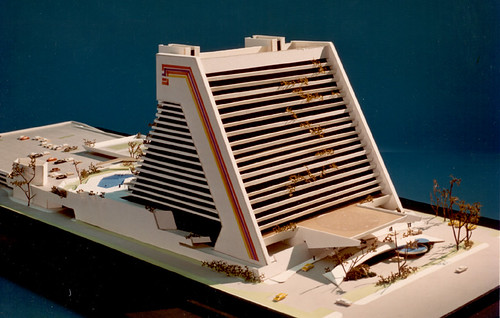
|
|
Back in the 1970s Donald Trump commissioned this hotel and casino
design from Martin Stern, Jr., a well-known Las Vegas architect. It was to be called Xanadu
[2].
|
The thing is, I could describe “Kubla Khan” from the outside, but I didn’t
know what was on the inside holding it up and causing it to turn on its axis.
The basic description was in place in my 1972 master’s thesis, which had been
directed by Richard Macksey of the interdisciplinary Humanities Center at
Johns Hopkins. A year later, in the fall of 1973 I went off to the State
University of New York at Buffalo to get a PhD in English. I was also hoping
to figure out the inner mechanisms of “Kubla Khan”.
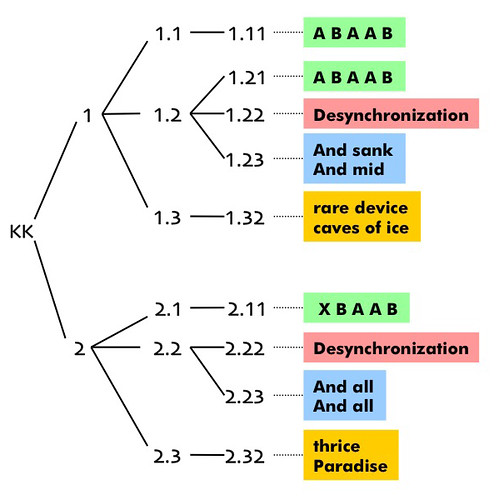
|
|
Cardinal points in “Kubla Khan”, 1972
|
Members of the English faculty read that master’s thesis and recognized that,
yes, there was something there. But they couldn’t help me figure it out. A
fellow graduate student, Ralph Henry Reese, introduced me to a professor in
the Linguistics Department, David Hays, who was one of the founders of
computational linguistics. Perhaps he could help me? Yes, he could, and did. I
worked closely with him and his students and learned a great deal; it was
perhaps the best learning experience of my life – well, next to years of
informal tutelage by my father. We figured out a Shakespeare sonnet, “The
Expense of Spirit”, but “Kubla Khan” remained an enigma.
By that time I’d decided that “Kubla Khan” was my touchstone, the thing I used
to test my knowledge and understanding of the human mind. For that’s what I
was really interested in, the mind. Literature was but a way of investigating
the mind.
My touchstone kept eluding me. I wrote articles on the brain, cognitive and
cultural evolution, metaphor, music, and Shakespeare plays – some of them in
conjunction with Dave Hays; we’d become fast friends and colleagues. I
published a book on computer graphics and imaging –
Visualization: The Second Computer Revolution (1989), coauthored with
Richard Friedhoff. A decade later I wrote a book on music,
Beethoven’s Anvil: Music in the Mind and Culture (2001). While working
on that book I consulted closely with Walter Freeman, a pioneering
neuroscientist. Then I decided to take another crack at “Kubla Khan” [3]. Much
better, I thought, but not yet there.
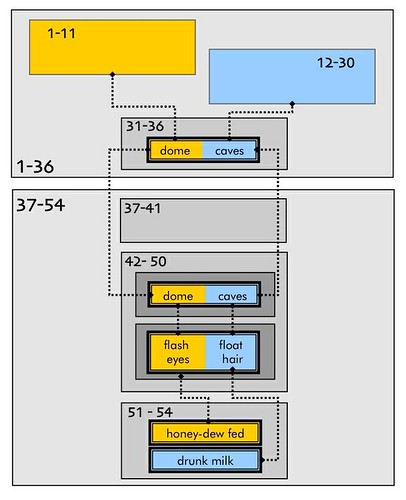
|
|
“Kubla Khan”, 2003
|
That was 2003. I couple years later I joined the academic blogosphere and
became a blogger at The Valve [4], a group blog about literature and
philosophy. I posted up a storm, and when The Valve shut down, I moved here,
to New Savanna, and continued posting. In 2010 or so I began gathering posts
into working papers and posting them to the web [5]. I was now, in effect,
self-publishing.
I kept thinking about “Kubla Khan”, of course, and had become interested in
animation after watching Disney’s Fantasia in connection with an
aborted book project. My friend Tim Perper then introduced me to Japanese
manga and anime – Cardcaptor Sakura, Metropolis (Tezuka’s manga,
Rintaro’s anime),
Sailor Moon, Azumanga Daioh, Ghost in the Shell, Spirited Away, Astroboy
and others. I had extensive correspondence with the late Mary Douglas, DBE,
FBA (Dame Commander of the Order of the British Empire –
I kid you not – and Fellow of the British Academy), who got me
interested in ring-composition, which has become a central interest of mine.
And that interest has recently converged on, you guessed it, “Kubla Khan”.
Earlier this year I began having a Twitter conversation with James Ryan, a
graduate student working on computer games at the University of California at
Santa Cruz. He became interested in the work I’d done at Buffalo on
computational linguistics and poetry and invited me to give a presentation at
a workshop he’d organized in Portugal. So I wrote a paper and delivered a
presentation based on it early in the morning on Tuesday, November 14, 2017
[6]. As I couldn’t make it to Portugal I had to deliver the paper over the
Internet via Skype. The time difference meant that I had to get up at 4:30 AM
so I could shower, shave, and have breakfast in time for my presentation at
5:45 AM my time, but 10:45 AM in Portugal.
The presentation went well. In the question period Ryan asked me whether I
planned to get back to “Kubla Khan”. I forget exactly what I said, but it was
something like “maybe/I hope to/someday/yes”. Two days later I’d gotten back
to the poem and decided that, yes, I knew how it worked. I’d had a glimpse of
the mechanism. I could see the springs and gears.
More or less.
I quickly published some notes to the Internet (such as the
Teaser above), place keepers. Then I went to work explaining those
notes. I posted one draft on the web on November 29,
The problem of form in “Kubla Khan”, in which I stated the problem,
sorta’ [7]. I then set to work on another paper in which I intended to outline
a solution. That paper grew and grew until I called a halt and decided to
regrounp. I started working on the new document on the 5th or 6th, I don’t
remember just when.
And this brings us back to where we began. On December 7, my 70th birthday:
I woke up, cruised the web, made four posts to New Savanna, had breakfast
and then, and then I decided to go out and take some photos, including some
of that green platform pump I’ve been having so much fun with. That was a
bit unusual because I generally write in the morning, and perhaps I was
motivated by my birthday to do something a bit different. But that’s all it
was, a change in routine. It’s no big deal; I do it all the time.
But then I realized, sometime in the afternoon, that this birthday IS a big
deal, that I really can make it a big deal. How? By finishing my working
paper, Calculating meaning in “Kubla Khan” – a rough cut.
And that’s what I did. The fact is, I didn’t quite finish it that day. My
brain was frazzled by six or seven in the evening, but I’d completed the guts
of the paper, the part about “Kubla Khan”. I cleaned up the last details
(about a contrasting poem) the next day, December 8, and posted it to the web
[8].
And so there it is, my life’s project, done. Well, sure, I’m going to have to
write a book on Coleridge, and the book may not work out – it’s not done until
it’s done. Still, as far as I’m concerned, I’ve taken this as far as I can.
I’ve satisfied the hunger that sent me off to Buffalo over four decades ago.
From this point on it’s up to others to take it farther – and it must be taken
farther. When the book is written – it’ll take a year, maybe two depending on
what else I’ve got to do, which is likely quite a lot – I will have fulfilled
my responsibility to that quest.
What’s curious is that there are no concepts in the papers that I didn’t have
at hand, say, five or even ten years ago. Why’d it take me so long to put the
pieces together? I don’t really know, but I offer two observations: 1) One of
the pieces is the mathematical idea of convolution, which David Hays and I had
used in a paper we’d published in the mid-1980s. I’d seen it in recent work on
“deep learning”, so it was newly relevant. 2) I was asked. A small group of
people I hadn’t know about six months before wanted to know what I’d been
doing back in the 1970s. If the world was now asking about my work, perhaps
there was something there I hadn’t realized. I looked, and SHAZAAMM!!,
I found that something.
What’s next? I can think of perhaps five academic books I could do, including
the Coleridge book. But I’m not sure I really want to write all of them. I’ve
got to do the Coleridge book, and there’s a book on cultural evolution I’ve
got to do – as far as I can tell, no one else is in a position to do it. As
for those other books, much of the material is already out there on the web in
the form of working papers. Gathering those papers into books would allow me
to tighten things up a bit, but it’s pretty accessible as it is.
And then there’s the notes I’ve done on attractor nets [9]. They need a lot of
work, or I could simply abandon them. But I need collaborators to take that
project farther, people with technical skills I don’t have. I’d like to find
some suitable people and get on with it. And, frankly, I’d be interested in
making that a commercial venture, though it would be a long shot.
But then there’s the Bergen Arches Project. That’s a different story; I figure
it will take up a good deal of my time over the next decade. Before we get to
it, though, you need to understand how Jersey City became my home.
Making Jersey City my home
When Dave Hays died in 1995 – lung cancer – I had to reestablish contact with
the mid-1970s gang. One of them, Bill Doyle, was starting a new company,
MetaLogics, and he wanted me to be part of the team. The company was to be
based in Hoboken, NJ, so I moved to Jersey City, which bordered Hoboken to the
south. When the company died in the dot-com bust of 2001 I decided to remand
in Jersey City.
Late in 2003 I was attending a meeting of a seminar, Computers, Man, and
Society, held at the Faculty House of Columbia University. Another member of
the seminar, Takashi Utsumi, had brought a guest, Jerry Greenberg. Jerry
explained a project he was working on, called World Island. The idea was to
create a “permanent world’s fair, for a world that’s permanently fair” on
Governor’s Island, in New York Harbor just off the southern tip of Manhattan.
It was to be a combination of hotels, an ongoing trade show, restaurant row,
an arts and crafts fair, museum, meeting place, and a whole lot more, with
orchids woven throughout. Why orchids? Because, said Jerry, we know that “when
the orchids go, we’re next.” I was entranced by the vision, scope, and poetry
of the project.
I also figured it would be an opportunity for some interesting consulting
money. I made appointment to meet Jerry at his office just off Union Square in
Manhattan. It quickly became obvious that he didn’t have two dimes, well,
quarters, to rub together, but that he had attracted the interest of people
with real money. His presentation materials had been professionally produced
and, as I said, the project was fascinating.
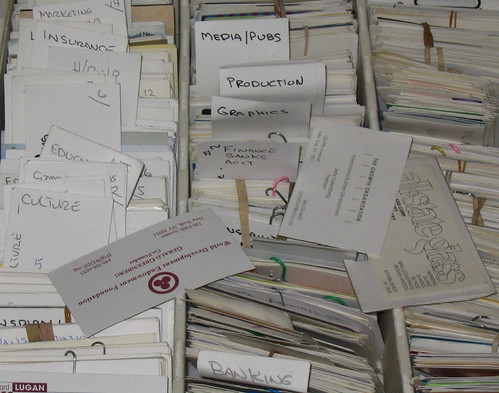
|
|
Jerry’s World Island Database
|
So I decided to go along for the ride, to see what’s up. I schemed with Jerry,
did research, and refined his presentation materials. And I attended meeting
after meeting with a remarkable range of people, Wall Street financiers,
expatriate Russian inventors, German businessmen, theatre executives, a
billionaire New York real estate mogul (not Donald Trump), heads of NGOs, and
a motley crew of creatives in a wide variety of disciplines. All willing and
even eager to listen to this 20, 30, 40, 50 billion dollar (the number
fluctuated, but generally got larger over time) plan for a non-profit real
estate development in New York harbor [10].
In the summer of 2004 I was scheduled to attend a conference in Chicago to
deliver a plenary talk on “Music, the Mind, and Language”. I took a small
point-and-shoot camera with me so I could take photographs of the newly opened
Millennium Park [11], which seemed a useful model for some aspects of the
World Island Project.
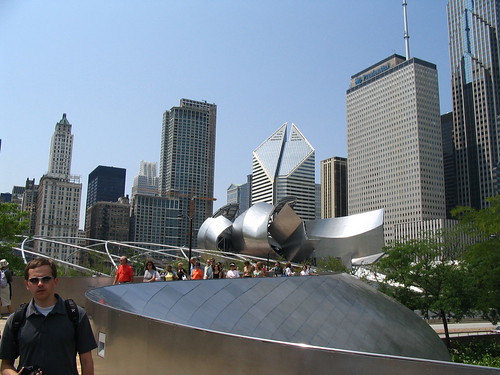
|
|
Millennium Park, Chicago
|
Now I owned a camera. I’d bought it for one specific purpose. Now what? Should
I take more photographs? Of what, and why?
I’d walk around the neighborhood taking photographs of this and that,
including this:
It was right across the street from me. I thought it was pretty cool. I
figured there must be more of that around here. I went looking.
And almost immediately I found this:
It was 18 feet wide, seven feet tall, and stood next to an active freight
line. When trains went by the sound was deafening and it went on for five or
ten minutes – these trains were long. The freight cars were covered with
graffiti.
I decided I would document graffiti Jersey City. I bought a better camera and
went to work, shooting hundreds and thousands of picture of local graffiti. It
changed my life. It made Jersey City my home.
* * * * *
Jersey City is where I lived, I’d lived there since 1997 or 98. But living in
a place doesn’t make it a home, home is something deeper. Home is about your
soul, for want of a better word.
I was, and am, a bachelor. I’ve never been married, and don’t have any
children. A wife and children create a home. They are more than you; your
commitment to them extends your vital concerns beyond yourself. Moreover they
will be involved in social circles other than yours; those circles – I’m
thinking particularly of your children’s friends – commit the family to a
physical place. Nothing committed me to Jersey City in that way.
I am an independent scholar. I write and publish books and articles; I hang
out on the Internet and interact with scholars around the world. That’s where
I am rooted, that is my (spiritual) home. All that stuff about “Kubla Khan”,
and poetry and whatever else, that’s my soul, that’s the thing bigger than me
that connects me to the world. I can participate in those activities no matter
where I am physically located.
When I committed myself to photographing, to documenting graffiti in Jersey
City, that commitment made Jersey City my home. It embedded my interests as a
scholar and thinker in the physical infrastructure of the place where I lived.
It was graffiti that brought me to attend a meeting of the Hamilton Park
Neighborhood Association (HPNA), where I found out that many of my neighbors
had a different attitude toward graffiti than I did. That’s understandable,
and that’s OK.
I helped the HPNA with a small project to transfer the association’s papers to
the local branch of the library. It was there that I saw a file of newspaper
clippings about the Bergen Arches. What’s that, I thought,
what’re they?
A bit later some graffiti writers told me about another graffiti site, “below
Dickinson, near the Wall of Fame.” So I poked around and there it was:
That just HAS to be the Bergen Arches, I thought. Yes, there was
graffiti there:
But there was also ‘nothing’, not really nothing, but no city.
Of course, I’d seen such places all my life, here and there. Growing up in
Johnstown, Pa., my father would take me hiking in Stackhouse Park, in
Westmont. We’d pull off the side of the road and enter through a parting in a
wall of tall grass, bushes and trees. There we’d walk in a small ravine on
ground cushioned by pine needles, the trees over head, and a small brook
jumping from rock to rock. There was a similar place near our home on Luther
Road, about a half mile away, near the mink farm (as we kids called it). Tall
pines, cool shade even in the middle of summer. There was a more generous and
more mysterious ravine near the YMCA summer camp I went to, but not
forbiddingly large. I made a painting of it, though in a very abstract style.
It hangs in my sister’s dining room:
Coleridge wrote about such a place in “This Lime-Tree Bower”, which he wrote
at roughly the same time he wrote “Kubla Khan”. Here’s a passage:
They,
meanwhile,
Friends, whom I never more may meet again,
On springy heath, along the hill-top edge,
Wander in gladness, and wind down, perchance,
To that still roaring dell, of which I told;
The roaring dell, o’erwooded, narrow, deep,
And only speckled by the mid-day sun;
Where its slim trunk the ash from rock to rock
Flings arching like a bridge;–that branchless ash,
Unsunn’d and damp, whose few poor yellow leaves
Ne'er tremble in the gale, yet tremble still,
Fann’d by the water-fall! and there my friends
Behold the dark green file of long lank weeds,
That all at once (a most fantastic sight!)
Still nod and drip beneath the dripping edge
Of the blue clay-stone.
Is it physically the same as those other places? How should I know, I’ve never
been there. And those other places, Stackhouse Park, the mink farm, YMCA camp,
they weren’t the same, physically. But the mood, the myth, the meaning, the
same. All of them.
And yet the Bergen Arches wasn’t a natural formation. It had been blasted out
of the Jersey Palisades with 125 tons of dynamite. It took five years. They
laid four railroad tracks there, and those tracks took trains to the Hudson
River into the early 1960s. And then three of the four tracks were pulled out
– why not the fourth? – and the Arches were closed, abandoned, and forgotten.
But homeless people lived there, urban explorers trekked there, and graffiti
writes got up (as they say) on the masonry walls of the arches. It was home to
social networks running counter to mainstream society. In a sense, it was a
foreign overlay on and intrusion into the urban environment of Jersey City.
* * * * *
There’s a site about a quarter of a mile away from the Arches where I found
some first class graffiti. This site was also a do-it-yourself skate park. One
day in October of 2007 I arrived at this site to find the floor slab broken
up. The skate park was destroyed. On November 4, 2007, I saw this sign:
That set off the chain of events that would, almost a decade later, result in
the Bergen Arches project.
The Bergen Arches Project
I decided to attend the meeting, more out of curiosity than anything else. I
put on my banker’s suit and showed up. As I’d suspected, the meeting had been
called by the young councilman, Steve Fulop. Only four skate-boarders were
there, not enough to do anything. But they agreed to get more people out for a
meeting two weeks later. That meeting drew 30 skateboarders plus parents and
others. Fulop agreed to talk with the New Jersey Thruway authority to see if
the City could build a park beneath the I78 extension through the City and I
volunteered as liaison between the councilman and the skateboarders.
Without going into the details let’s just say that things didn’t work out, but
the process got me thinking [12]. The result of that thinking was a proposal
[13] to build a series of parks that spanned Jersey City roughly two miles
from east to west, areas outlined in yellow in the following map:
See that long narrow strip extending roughly from the center of the map to the
upper left? That’s the Bergen Arches. It’s about a mile long. I guestimated
that the whole project would cost a quarter to half a billion dollars and
could bring in 90 million a year in tourist revenue. I had no way of pursuing
the project, not something that large, but I circulated the report among
friends, gave a copy to the councilman, and put it online where the curious
could find it.
Why did I write the report if I had no way of pursuing the idea? Because it
was fun, serious fun. A way of playing around with possibilities for the
future. Maybe I couldn’t pursue the project, but who knows? Others might.
Do you remember that crazy World Island project I’d been working on with
Jerry, now Zeal, Greenberg? That’s where I got the idea for this two mile
string of parks in Jersey City. That’s where I learned to think about a city
as a coherent, if complex, object.
I continued to work with Zeal, with my writing, with my music – there was a
Saturday afternoon jam session on the Upper West Side of Manhattan I went to
for several years, and I continued photographing Jersey City graffiti. I moved
to a different Jersey City neighborhood, Bergen-Lafayette, where my interest
in graffiti led me to Greg Edgell at 51 Pacific Avenue. He curated a 5000 sq.
ft. loft there and the alley behind the whole block.
I showed him that proposal,
Jersey City: From a Skate Park to the World. He was skeptical, and
properly so. My response:
Yep, it’s crazy. But the world changes. I grew up during the Cold War and
figured it would still be going when I died. And then the Berlin Wall came
down. Shazam! The world had changed.
Greg bought it.
We worked on a variety of projects over the next few years. Well, Greg worked;
I advised and took photos. A block party on Pacific Avenue, an emergency mural
at the Liberty State Science Center, campaign headquarters for Councilman
Steve Fulop (who ran for mayor and won), murals and events all over the place.
Green Villain – the name under which Greg and his floating crew of associates
worked – was becoming established, not only in Jersey City, but New York City
too.
The largest project involved turning a shuttered Pep Boys store into a
temporary graffiti gallery, for a week (inside) and a month (outside) before
the building was demolished to make way for new construction. We called it the
Demolition Exhibition. It made the Wall Street Journal [14].
That was late summer of 2015. What next? It was Greg who asked the question
and early in 2016 he came up with the answer: The Bergen Arches Project. This
was out of that report I’d written – in a spirit of high ludic seriousness –
back in November of 2007, the report I used to introduce myself to Greg, the
report he thought was crazy, and I agreed. As Louis Armstrong sang, what a
wonderful world, and Israel Kaʻanoʻi Kamakawiwoʻole (aka Brother Iz) sang it
too.
It didn’t make sense to tackle the whole two and a half miles; for one thing,
part of that strip had been in litigation for the last decade and a half. No,
the Bergen Arches was quite enough. It was and is a single coherent piece of
real estate. Greg contacted some architect friends of his; they had some
design ideas and produced some renderings; and we launched a website in the
late summer of 2016 [15]. We were live.
There’s no need to go into any detail about what happened next. It’s
sufficient to note that we got a bit of buzz in Jersey City, we’ve talked with
neighborhood associations, architects, activists, and city officials and
politicians. We’ve assembled a small core team, including a young architect,
Rahid Cornejo; a dyed-in-the-wool Jersey City activist; Dan Levine, and our
lawyer, Judith O’Donnell. And we have formed a non-profit, Bergen Arches, a NJ
Nonprofit Corp. We’re figuring it for a ten-year ride. However it ends – who
knows? – it’ll be fun. And hard work.
What’s next?
That’s where I am as I head into my eighth decade. The way it looks to me,
here and now as I write this early in the morning of December 18, is that I’ve
got to phase out the intellectual work and devote more time and effort to
other things, the Bergen Arches certainly, but also music, photography, and
Charlie Keil’s projects – which I’ve not mentioned, but, whatever; they’re
important too.
“Phase out” doesn’t mean drop it like a hot potato. What it really means is
transmit the knowledge. While the world certainly has not rewarded me for the
time and effort I’ve put into my intellectual work, it did somehow manage to
afford me the time and resources to do it. I’ve got to repay that debt. I’ve
got some more writing to do, just how much is not clear. But I’ve also got to
create an institution of some kind, a modest one, that can carry on the
intellectually independently of me – at the moment, I figure the academic
world is a lost cause. Just what that will be, I don’t know, but that’s OK.
It’ll come in time.
I have no idea what will happen with the Bergen Arches project. That too will
come in time. And then there’s Rita Moreno. When she calls, I’ve got to have
my dancing shoes on.
* * * * *
“We’re in one of those great historic periods…
when people don’t understand the world anymore…when the past is not
sufficient to explain the future.”
– Peter Drucker
Never doubt that a small group of thoughtful committed citizens can
change the world; indeed it is the only thing that ever has.
– Margaret Mead
* * * * *
Concerning the image at the head of the article: The “70” is obvious enough.
The white text is “Kubla Khan”, without punctuation and line divisions. The
underlying photograph is a small shrine someone had placed in the Bergen
Arches several years ago. Notice the greeting at the bottom:
Welcome to Eden.
References
[6] Here’s the workshop page:
First Workshop on the History of Expressive Systems, November 14, 2017,
at the International Conference on Interactive Digital Storytelling (ICIDS),
Funchal, Madeira, Portugal,
http://www.expressive-systems.org/hex/01/








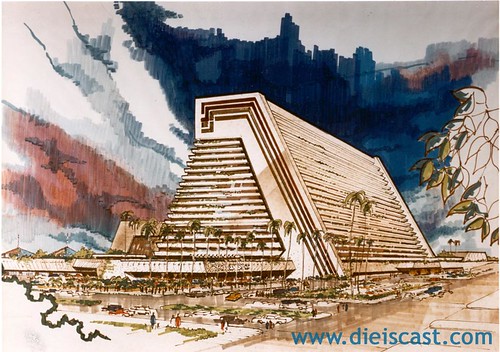

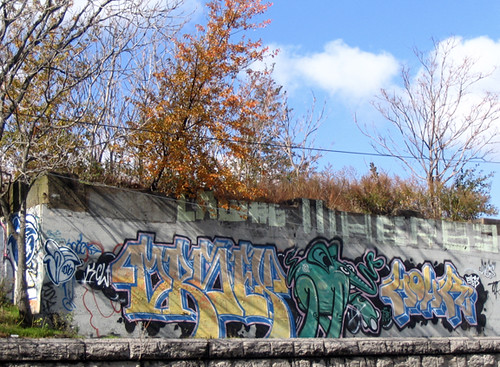
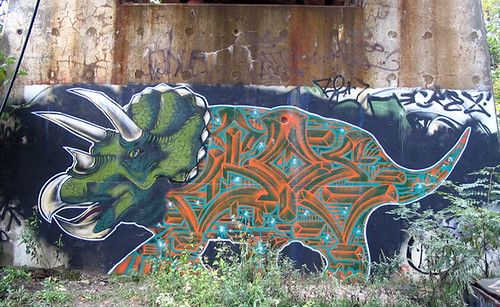
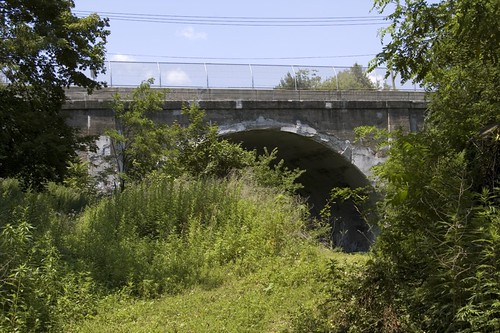
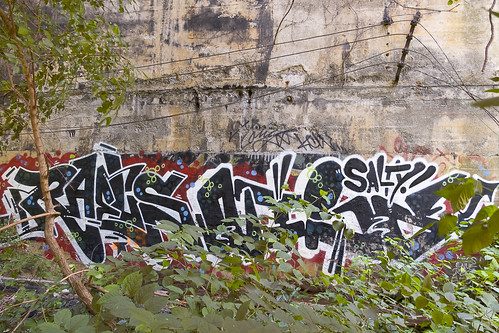
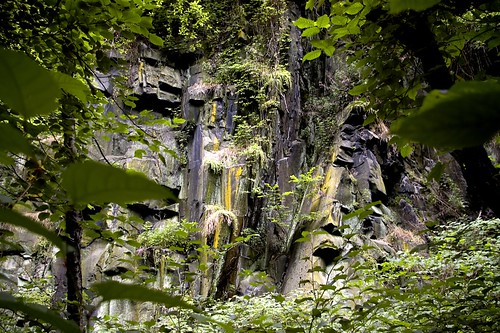
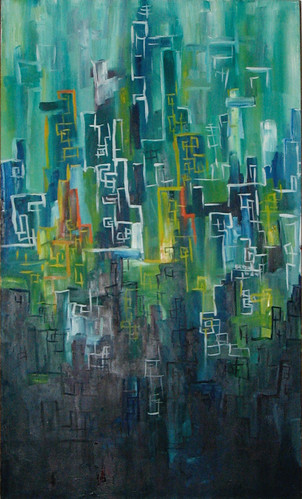
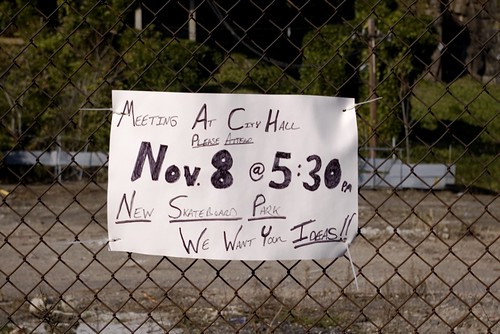
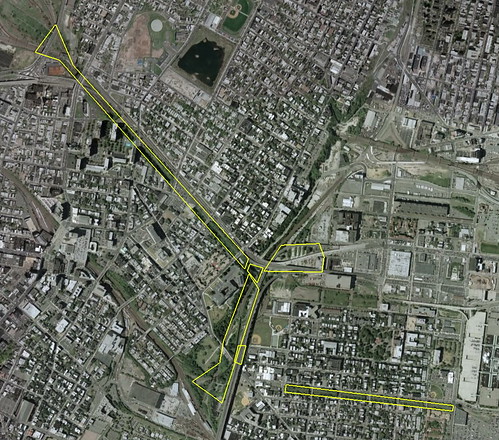
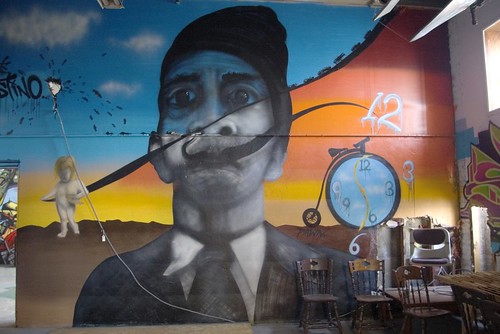
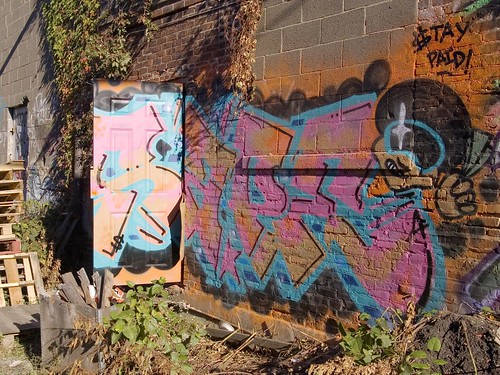
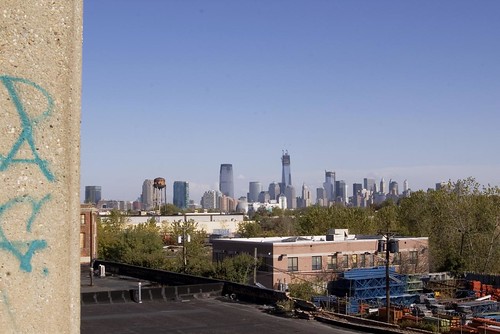
As you say, "The best is yet to come."
ReplyDeleteYes. These are the good old days. The best is yet to come.
DeleteWhat a fantastic post, Bill. You drew back the bowstring so well, setting us up for your deft meditation on place. Bravo, sir.
ReplyDeleteThanks, Bryan. And now, it's the New Year and the next decade of my life. Got to start delivering.
DeleteI hear you. Back to work for me, too.
Delete